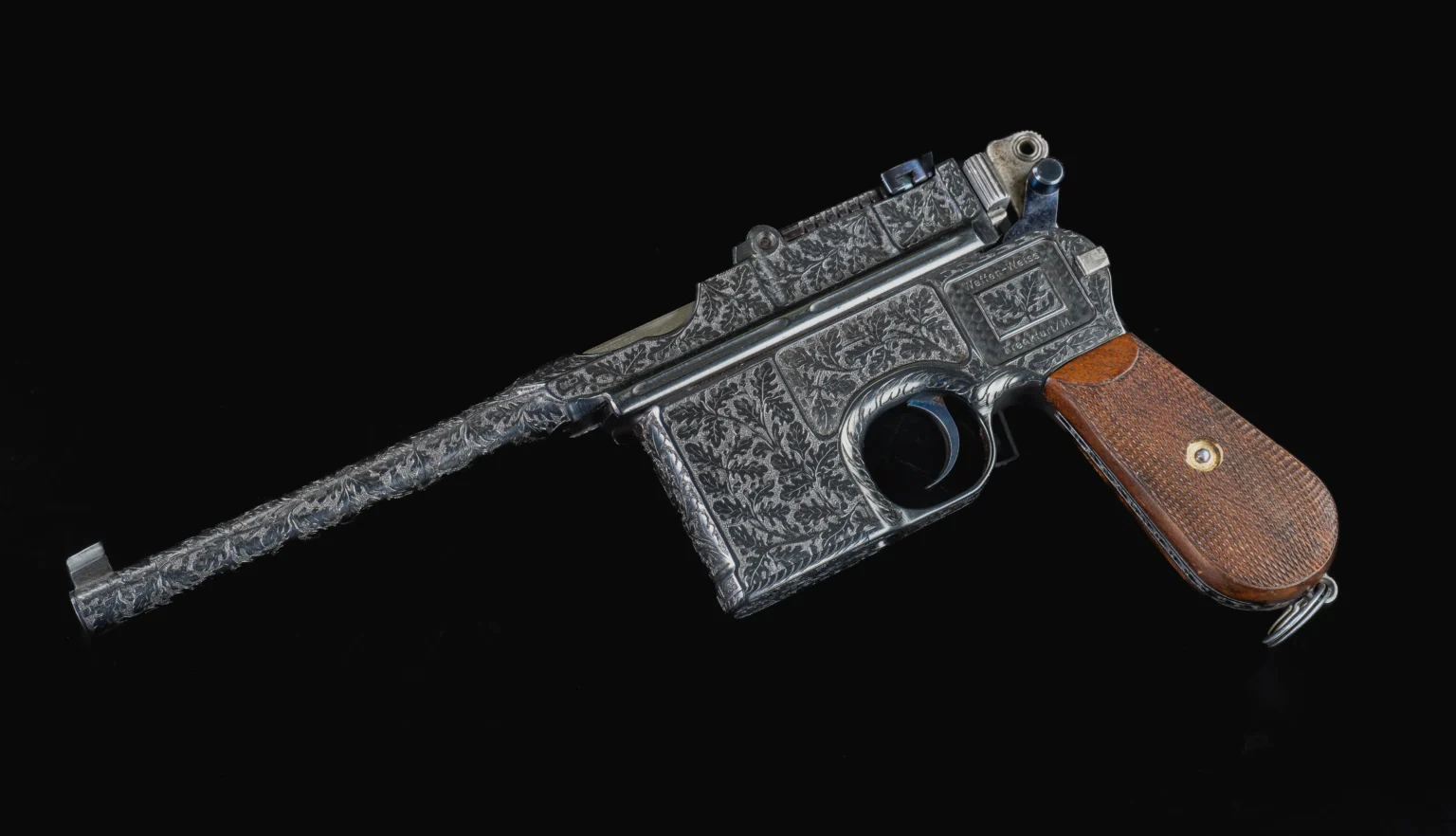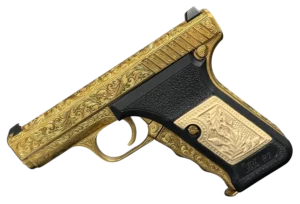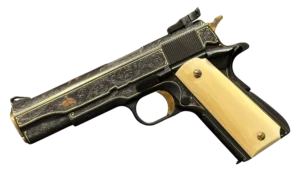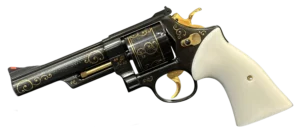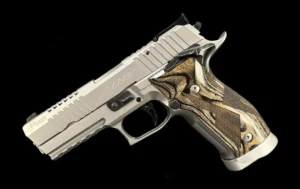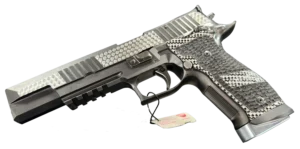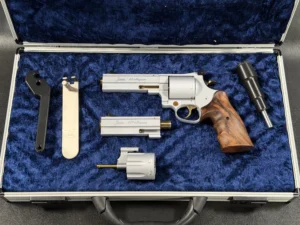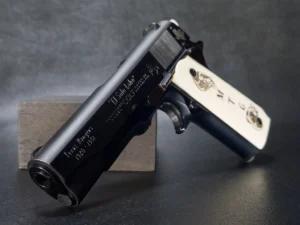The Mauser C96, a semi-automatic pistol with a distinctive broom handle grip, is a classic firearm with an indelible mark on history.
First produced in 1896 by the German arms company Mauser, its innovative design and high velocity made it a popular choice among military personnel and revolutionaries. From the battlefields of World War I and II to the hands of historical figures like Winston Churchill and Lawrence of Arabia, the Mauser C96 has seen action across continents and decades.
But the Mauser C96 is more than just a weapon. It’s a testament to the ingenuity and craftsmanship of late 19th and early 20th-century firearms manufacturing. Its unique features and technical specifications have influenced the design of other famous pistols and continue to be studied by gun enthusiasts and historians today.
In this article, we’ll delve into the history of the Mauser C96, exploring its birth, design innovations, military use, cultural impact, and enduring legacy. Whether you’re a firearms enthusiast, a novice shooter, or a history teacher, this comprehensive overview will help you appreciate the Mauser C96 in all its historical and technical glory.
So, let’s embark on this journey through time, tracing the path of the Mauser C96 as it shaped and was shaped by past-century events.
The Birth of the Mauser C96
The story of the Mauser C96 begins in the late 19th century in the bustling factories of the German arms company Mauser.
Founded by the Mauser brothers, Wilhelm and Paul, the company was already renowned for its high-quality rifles. But in 1896, they ventured into new territory by producing the C96, one of the earliest semi-automatic pistols to see widespread use.
The C96, with its distinctive boxy shape and integral box magazine in front of the trigger, was a departure from the revolvers that dominated the era. Its unique “broom handle” grip, high velocity, and long-range accuracy set it apart from other pistols of the time.
The Mauser C96 quickly gained popularity, not just in Germany but across the globe. From British officers in the Boer War to Chinese revolutionaries, the pistol found favor with those who valued its innovative design and reliable performance. This marked the beginning of the Mauser C96’s journey through history, which would see it play a role in some of the most significant events of the 20th century.
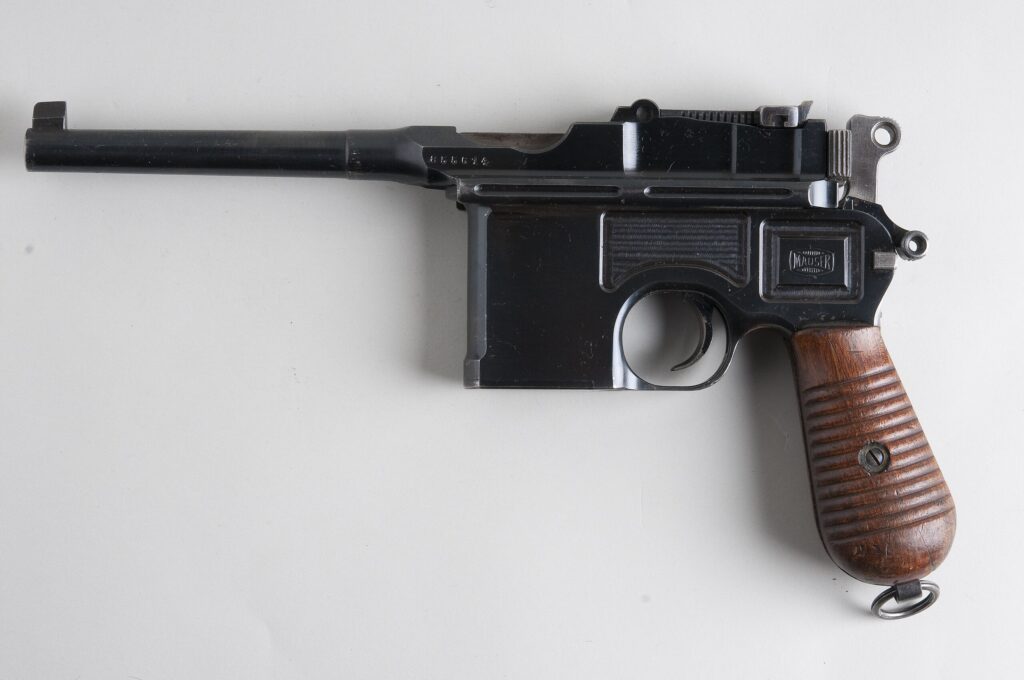
Design Innovations and Technical Specifications
The Mauser C96 was a marvel of engineering for its time, boasting several innovative features that set it apart from other firearms.
One of the C96’s most distinctive aspects is its “broom handle” grip. This design and the pistol’s boxy shape give the C96 its iconic silhouette. The grip is not just for aesthetics, though. It also provides:
- It’s a solid hold.
- Enhancing the shooter’s control and accuracy.
- A feature sure to impress firearms enthusiasts.
The C96 was chambered in several calibers, but the most common was the 7.63x25mm Mauser. This cartridge was known for its high velocity, contributing to the pistol’s long-range accuracy. The C96 also featured an integral box magazine before the trigger, which could be loaded with stripper clips. This was a significant departure from the revolving cylinders of contemporary pistols.
Here are some critical technical specifications of the Mauser C96
The Mauser C96’s design was not just innovative; it was also practical. The pistol could be disassembled without tools, making it easy to maintain in the field. To disassemble the C96, one would first ensure the gun is unloaded, remove the magazine, and pull back the bolt to inspect the chamber.
This simple process made it easy for soldiers to keep their pistols in working condition, a crucial feature in the heat of battle. This combination of innovation and practicality is a testament to the genius of the Mauser brothers and the enduring appeal of the C96.
The Mauser C96’s robust design and high-velocity cartridge made it a popular choice for military use, a fact that is sure to intrigue history enthusiasts. Its first significant deployment was during the Boer War when many British officers privately purchased it.
The C96 also saw extensive use in World War I and II. It was used by various military and police forces worldwide, including Germany, China, and Spain. The pistol’s long service life is a testament to its durability and the high regard it holds.
The C96’s high muzzle velocity and long-range accuracy made it a formidable weapon on the battlefield. Its unique design, which allowed for the attachment of a wooden stock, also gave it an edge. This feature turned the pistol into a short-barreled rifle, providing excellent stability and accuracy.
The Mauser C96’s role in military history is significant. It was one of the first semi-automatic pistols to see widespread use, marking a shift away from revolvers and setting the stage for the development of modern sidearms. Its influence can be seen in the design of many modern pistols, with its innovative features and robust construction setting a standard for future firearms.
Notable Users and Cultural Impact
The Mauser C96 has been wielded by some of history’s most notable figures. Winston Churchill famously used a C96 during the Battle of Omdurman in 1898. Lawrence of Arabia and Chinese revolutionary Sun Yat-sen were also known to favor the pistol.
Beyond its historical use, the C96 has significantly impacted popular culture. Its distinctive shape and iconic status have been included in numerous films and video games. From the Star Wars franchise, where it was modified to create Han Solo’s blaster, to the Call of Duty video games, the C96’s influence is widespread.
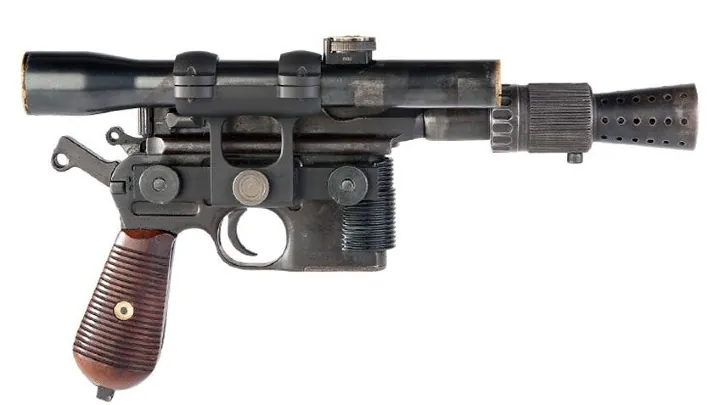
The pistol’s unique design and historical significance have also made it a sought-after item for collectors. Original and well-preserved C96 pistols are highly prized, and the pistol’s various models and calibers offer a rich field for collection and study.
The Mauser C96’s cultural impact extends beyond its practical use. Its distinctive design, historical significance, and iconic status have ensured its place in the annals of firearms history and popular culture.
Variants and Evolution of the C96
Over its long service life, the Mauser C96 saw several variants and modifications. One of the most notable is the ‘Red 9’ variant. This model was chambered for the 9x19mm Parabellum round, a more powerful cartridge, and marked with a large red number 9 on the grip for easy identification. This variant was introduced during World War I when the German army was standardizing its ammunition, and the ‘Red 9’ was a clear indicator of the correct ammunition for the pistol.
Another significant evolution of the C96 was the Schnellfeuer, or “rapid fire.” This was a fully automatic version of the pistol, demonstrating the adaptability of the original design. The Bolo model, a smaller version of the C96, also gained popularity after the Russian Revolution.
The Mauser C96’s design allowed for significant evolution and adaptation. From changes in caliber to size and firing mode alterations, the C96’s various models reflect its versatility and enduring design. This adaptability, combined with its robust construction, contributed to the pistol’s long service life and continued relevance in the world of firearms.
The Mauser C96 in the Global Market
The C96 didn’t just make waves in Germany; it significantly impacted the global market. The pistol was exported globally and copied by several countries, including Spain and China. This widespread distribution and replication speak volumes about the C96’s popularity and influence.
The pistol’s role in international arms trade during the early 20th century is a subject of economic and historical analysis. Its presence in various parts of the world, from the battlefields of Europe to the hands of revolutionaries in Asia, underscores its global reach. The Mauser C96’s story is a tale of German engineering prowess and a narrative of global military history and technological progress.
Collecting the Mauser C96: What to Look For
For those interested in adding a Mauser C96 to their collection, there are a few key factors to consider. The pistol’s value as a collectible varies based on its condition, rarity, and historical significance. Collectors highly prize original and well-preserved Mauser C96 pistols.
The pistol’s unique features, such as the detachable stock and long barrel, set it apart from other firearms of the era. These distinctive elements and the pistol’s historical context enhance its appeal to collectors. Whether you’re a novice shooter, a seasoned firearms enthusiast, or a history teacher, the Mauser C96 offers a tangible connection to the past and a fascinating study of firearm design and history.
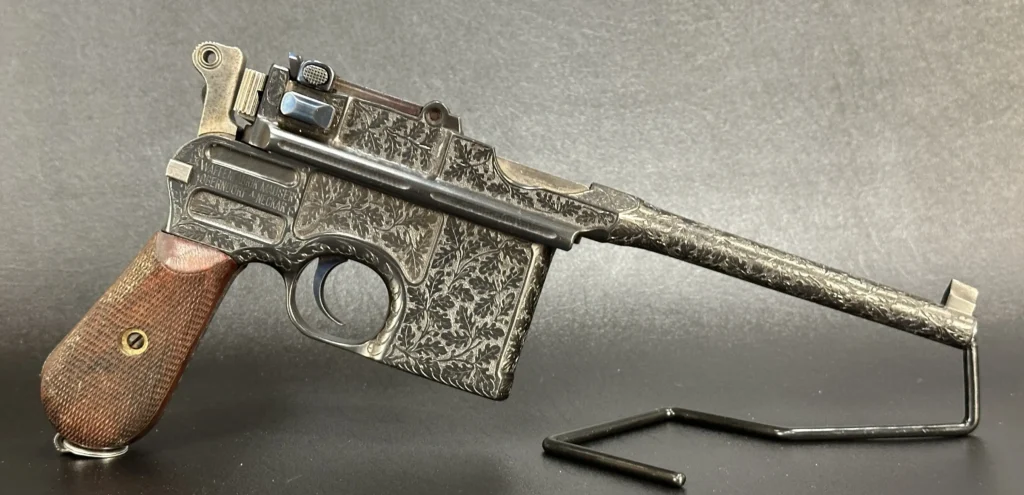
The Legacy of the Mauser C96
The Mauser C96’s legacy extends far beyond its time of active use. Its influence can be seen in the design of some modern firearms, and its story is intertwined with the broader narrative of global military history and technological progress. The pistol’s impact on firearm design and culture is still discussed and appreciated by gun enthusiasts today.
The Mauser C96’s presence in popular culture has helped maintain its relevance and interest among younger generations. Its distinctive look has made it a sought-after item for film and theater productions. The pistol’s association with historical figures and events also adds to its allure.
The Mauser C96’s contribution to developing semi-automatic firearm technology is a crucial aspect of its historical importance. Engineering students and firearm designers study its mechanical design for innovative solutions to early semi-automatic pistol challenges.
The pistol’s enduring legacy reflects its significance in the history of firearm development and its impact on culture and society. The Mauser C96 is not just a firearm; it’s a piece of history that continues to captivate and inspire.
Conclusion: The Mauser C96’s Place in Firearms History
The Mauser C96 holds a unique place in firearms history. Its innovative design, widespread use, and cultural impact cemented its classic status. From its role in military conflicts to its influence on modern firearm design, the C96’s story is a testament to the innovation and craftsmanship of late 19th and early 20th-century firearms manufacturing.
As we look back on the history of the Mauser C96, we see more than just a pistol. We see a symbol of technological progress, a piece of global history, and a fascinating subject of study for enthusiasts, novices, and educators alike.
Frequently Asked Questions
What makes the Mauser C96 distinct from other pistols of its time?
The Mauser C96, introduced in 1896, stands out with its unique “broom handle” grip and boxy shape. Unlike contemporary revolvers, it features an integrated box magazine in front of the trigger and offers high velocity, making it suitable for long-range accuracy.
What calibers were commonly used with the C96?
The most common caliber was the 7.63x25mm Mauser, known for its high velocity. However, some variants, such as the “Red 9” model, were chambered for the 9x19mm Parabellum round to match German military standards during World War I.
How was the Mauser C96 used in military history?
The C96 saw extensive use in multiple conflicts, including the Boer War, World War I, and World War II. British officers and revolutionaries in China favored it, appreciating its reliability and innovative features like the optional wooden stock that converted it into a short-barreled rifle.
What cultural impact has the C96 had?
The C96 has become iconic beyond its military role, appearing in movies and video games. It was famously modified as Han Solo’s blaster in Star Wars. Its unique design has also made it a popular collector’s item.
What are some notable variants of the Mauser C96?
Among the notable variants are the “Red 9” model and the Schnellfeuer, a fully automatic version. The smaller Bolo model gained popularity post-Russian Revolution due to its compact size.


